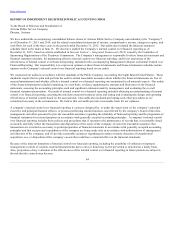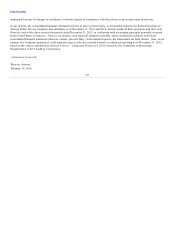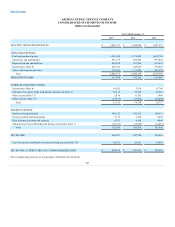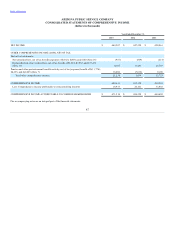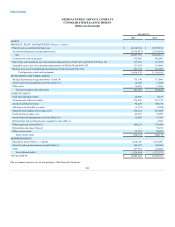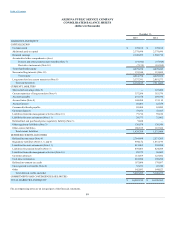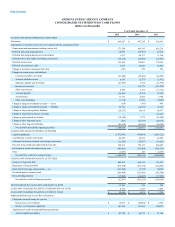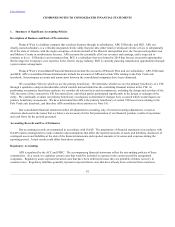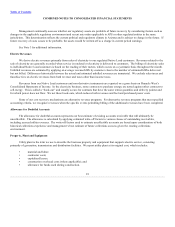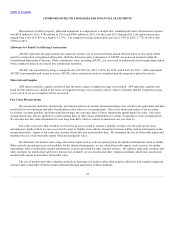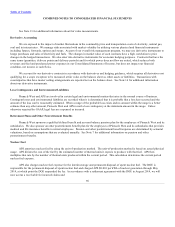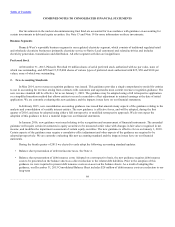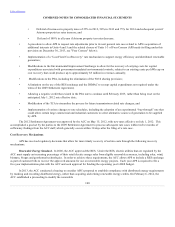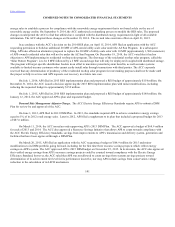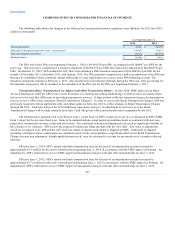APS 2015 Annual Report Download - page 98
Download and view the complete annual report
Please find page 98 of the 2015 APS annual report below. You can navigate through the pages in the report by either clicking on the pages listed below, or by using the keyword search tool below to find specific information within the annual report.
Table of Contents
COMBINED NOTES TO CONSOLIDATED FINANCIAL STATEMENTS
Management continually assesses whether our regulatory assets are probable of future recovery by considering factors such as
changes in the applicable regulatory environment and recent rate orders applicable to APS or other regulated entities in the same
jurisdiction. This determination reflects the current political and regulatory climate in Arizona and is subject to change in the future. If
future recovery of costs ceases to be probable, the assets would be written off as a charge in current period earnings.
See Note 3 for additional information.
Electric Revenues
We derive electric revenues primarily from sales of electricity to our regulated Native Load customers. Revenues related to the
sale of electricity are generally recorded when service is rendered or electricity is delivered to customers. The billing of electricity sales
to individual Native Load customers is based on the reading of their meters, which occurs on a systematic basis throughout the month.
Unbilled revenues are estimated by applying an average revenue/kWh by customer class to the number of estimated kWhs delivered
but not billed. Differences historically between the actual and estimated unbilled revenues are immaterial. We exclude sales taxes and
franchise fees on electric revenues from both revenue and taxes other than income taxes.
Revenues from our Native Load customers and non-derivative instruments are reported on a gross basis on Pinnacle West’s
Consolidated Statements of Income. In the electricity business, some contracts to purchase energy are netted against other contracts to
sell energy. This is called a “book-out” and usually occurs for contracts that have the same terms (quantities and delivery points) and
for which power does not flow. We net these book-outs, which reduces both revenues and fuel and purchased power costs.
Some of our cost recovery mechanisms are alternative revenue programs. For alternative revenue programs that meet specified
accounting criteria, we recognize revenues when the specific events permitting billing of the additional revenues have been completed.
Allowance for Doubtful Accounts
The allowance for doubtful accounts represents our best estimate of existing accounts receivable that will ultimately be
uncollectible. The allowance is calculated by applying estimated write-off factors to various classes of outstanding receivables,
including accrued utility revenues. The write-off factors used to estimate uncollectible accounts are based upon consideration of both
historical collections experience and management’s best estimate of future collections success given the existing collections
environment.
Property, Plant and Equipment
Utility plant is the term we use to describe the business property and equipment that supports electric service, consisting
primarily of generation, transmission and distribution facilities. We report utility plant at its original cost, which includes:
• material and labor;
• contractor costs;
• capitalized leases;
• construction overhead costs (where applicable); and
• allowance for funds used during construction.
93


